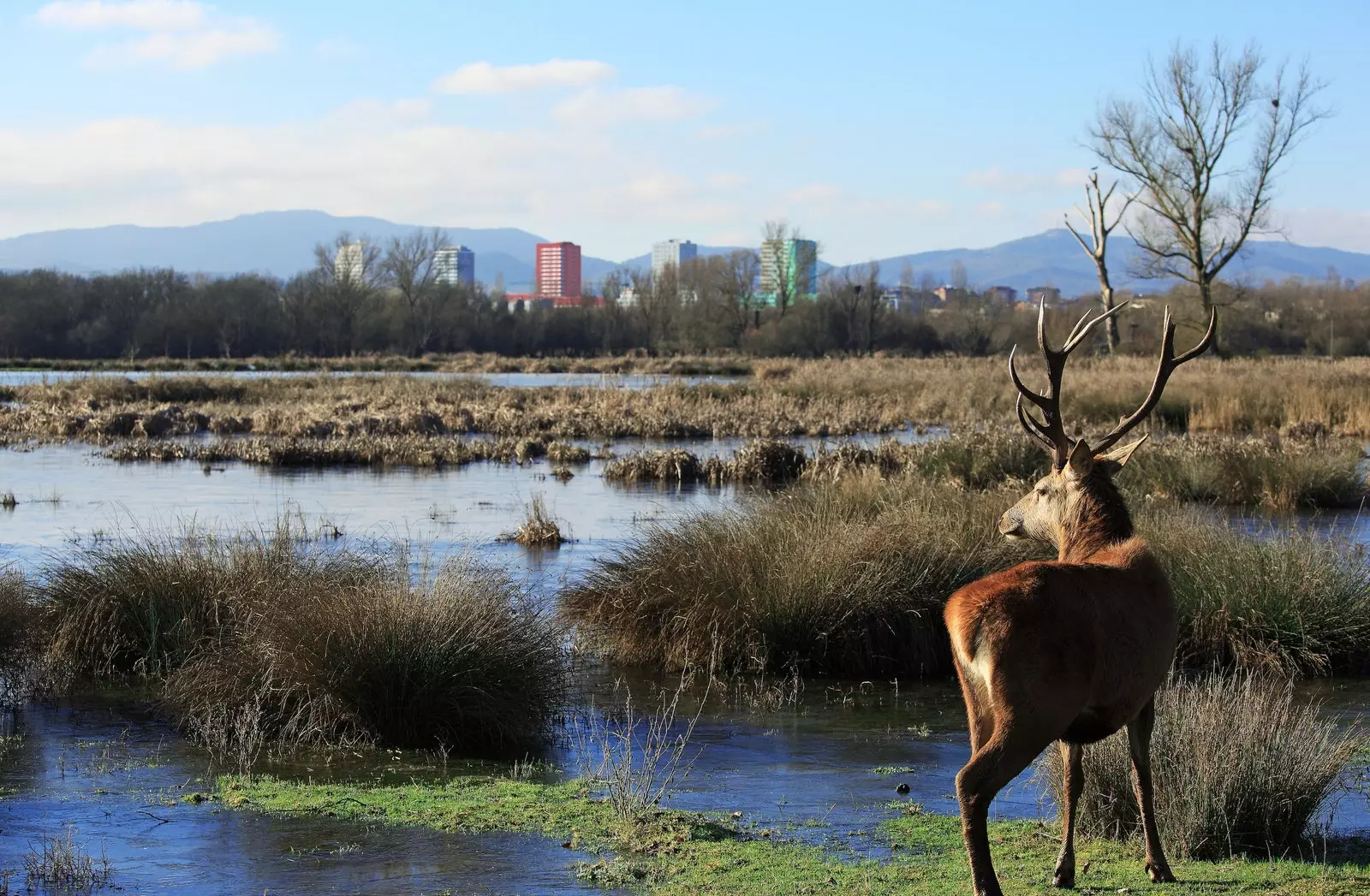
The treasures of Vitoria-Gasteiz, the 'Global Green City'
Among the Basque destinations, Vitoria-Gasteiz appears timid but with strength to show that it has a lot to offer. Founded in 1181 by the Navarrese king Sancho VI under the name of Nueva Victoria , the city preserves its medieval layout and endless corners that combine historical heritage, nature and food and wine. In 2012 it was chosen "European Green Capital" standing out as an excellent example of a sustainable destination thanks to projects such as the green ring , which embraces the urban core. Below we propose a complete route to explore this amazing city.
DAY 1. HISTORY IN THE HEART OF VITORIA-GASTEIZ
The first day of our stay will be dedicated to capturing the essence of Vitoria-Gasteiz in its nerve center . For this we will begin the tour in the Plaza de la Virgen Blanca or Plaza Vieja , crowned by the monument to the Battle of Vitoria, which was fought on June 21, 1813 against French troops . In addition to observing the balconies that surround it and stopping at one of its terraces, we must not forget to take a photograph in the vegetable letters that have so much symbology in this sustainable city.
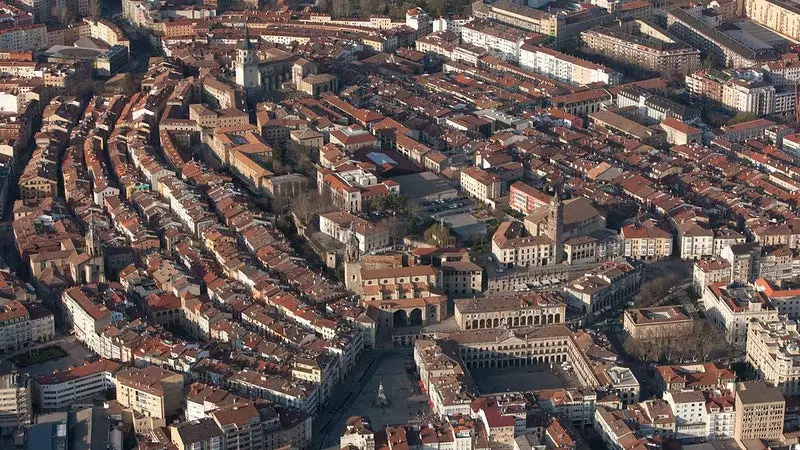
Medieval quarter of Vitoria-Gasteiz
In a minute we will arrive at the Plaza Nueva, where the Tourist Office is located, from which interesting guided tours depart. From there we will enter the medieval quarter, located on a hill where the primitive village of Gasteiz was located and which provides it with stupendous views. The streets, from the 12th century, stand out for their order and almond-shaped configuration. We cannot leave them without discovering their urban art, visiting museums such as the Bibat (fusion of the Archeology Museum with the Playing Card Museum) or entering the Cathedral of Santa María, inspiration for writers such as Ken Follet and an important Gothic example that keeps remains of the 8th century in its entrails . Just behind the cathedral we will see the Burulleria Square , ancient medieval necropolis surrounded by the Tower of the Hurtado de Anda, the Portalón and the armory house of the Gorbeo-Gebara.
In the old town too it will be essential to look at the Renaissance palaces and the medieval houses built on historic cobbled streets that will make us travel to the past.
After taking a break to eat, we will continue going through some sections belonging to the walls that were raised to protect the city . On the one hand, the one belonging to the 11th century, in its sections next to the Escoriaza-Esquivel Palace and next to the Olave refrigerator, used during the 19th century to supply ice to the city: from this last space you can also access the Rincón del Silencio , where some phrases by Mario Benedetti make us reflect on memory and oblivion. On the other hand, we will approach the Church of San Pedro to identify the remains of the 13th century wall within its walls.
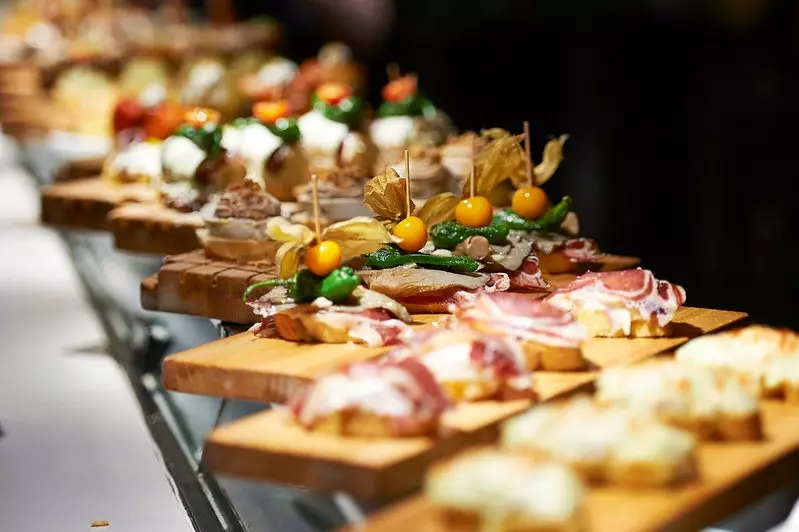
Vitoria-Gasteiz pintxos bar
In the afternoon, the widening area waits to reveal places like The Arches , an impressive building by the architect Justo Antonio de Olaguibel that was built at the end of the 18th century to unite the old part with the new one saving the 23 meters of unevenness that separated them . Stone dwellings with glass balconies rise above the arches. Both the Medieval Quarter and the Ensanche are perfect areas to enter charming shops -some of them centuries old- and get hold of local products.
The Cuesta de San Vicente will be the place chosen to enjoy the sunset over the New Cathedral and the Montes de Vitoria.
It's time for dinner, and going for a pintxo-pote is presented as a fun proposal to fill your stomach by trying different wines and pintxos. There are routes that cover bars throughout the city during the nights from Wednesday to Saturday. The price for the drink and the tapa starts at 1.50 euros in most of them.
DAY 2. NATURE EVERYWHERE
The second day in Vitoria-Gasteiz we will immerse ourselves in green to understand why Vitoria-Gasteiz is a sustainable city. The huge florida park , at the gates of the historic center, is the chosen point to start breathing nature very early. This emblematic green lung, created in 1820, is inspired by the romantic gardens of 19th century France , with labyrinthine paths that will lead us into a small cave and will guide us, among bridges and statues, by a stream, a bandstand and a tree and a bench to fall in love.
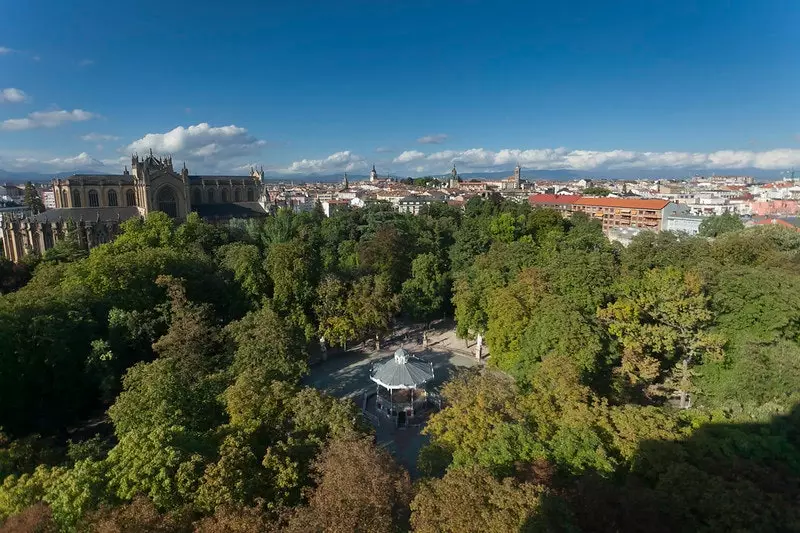
florida park
The Basque Museum of Contemporary Art is our next bet . Under the name of Artium, this museum opened in 2002 houses one of the most important collections of Spanish and Basque contemporary art. Approximately 3,000 works by artists such as Picasso, Miró, Chillida, Elena del Rivero or Oteiza are distributed throughout the unique building.
Art has whetted our appetite, but we are lucky to be next to the Mercado de Abastos, the city's main market, where stalls selling fresh products and bars meet in a modern building surrounded by glass windows in a continuous search for light. A chacolí and a delicious tortilla pintxo accompanied by Riojan joy will be just some of the delicacies that we can try here.
In the afternoon, the Walk of the Path It will lead us, among ancient trees, palaces, museums and mansions; to the Romanesque basilica of San Prudencio, a Romanesque emblem of the Basque Country dating from the 12th century. From there we can begin to surround Vitoria-Gasteiz through its Green Belt that will take us through all the parks that embrace the city. Among them are essential Salburua, an important wetland, and Olarizu , with its hill with excellent panoramic views of the city from which to say goodbye to the day.
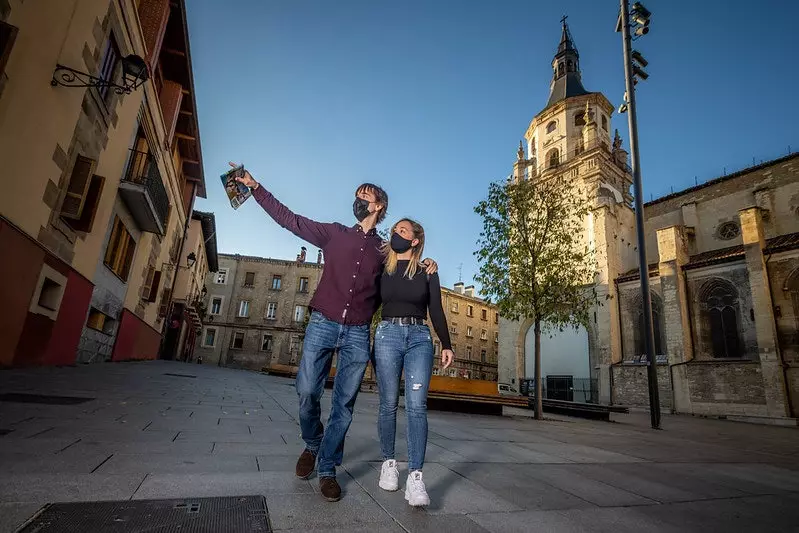
St. Mary's Cathedral
DAY 3. THE UNKNOWN JEWELS
Surely Vitoria-Gasteiz has conquered you to the point of wanting to extend your stay a little longer. Then, we will continue discovering other lesser known attractions of the capital of the Basque Country with which to continue combining nature, gastronomy and culture.
The Ensanche area and the medieval quarter have other interesting museums such as the Natural Sciences, Sacred Art or the Cultural Center of Montehermoso ideal for spending the morning.
At lunch time we can go to the cutlery street , which brings together approximately 77 bars in which to combine pintxos and history.
After filling our stomachs, we can rest in one of the parks and gardens that we still have to visit: Bishop Fernández de Piérola Gardens, Judimendi, Arriaga or San Martín Park.
If after all this we have the strength to continue discovering new proposals, we can go to the Sanctuary of Our Lady of Estíbaliz, a Romanesque treasure located about 10 kilometers away or hit the road to discover all the unexpected wonders of Álava.
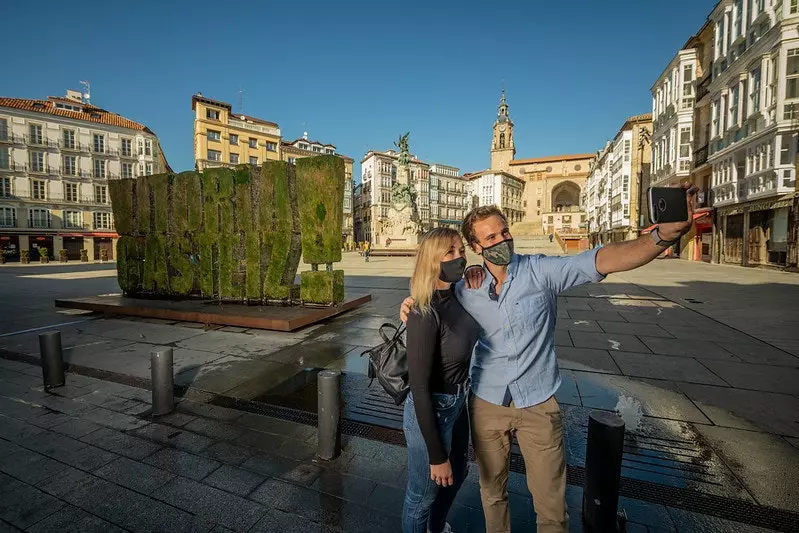
Vitoria-Gasteiz, everything green!
